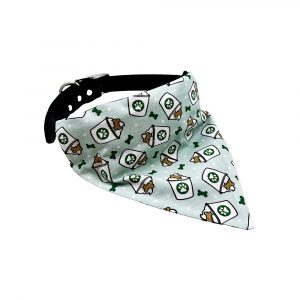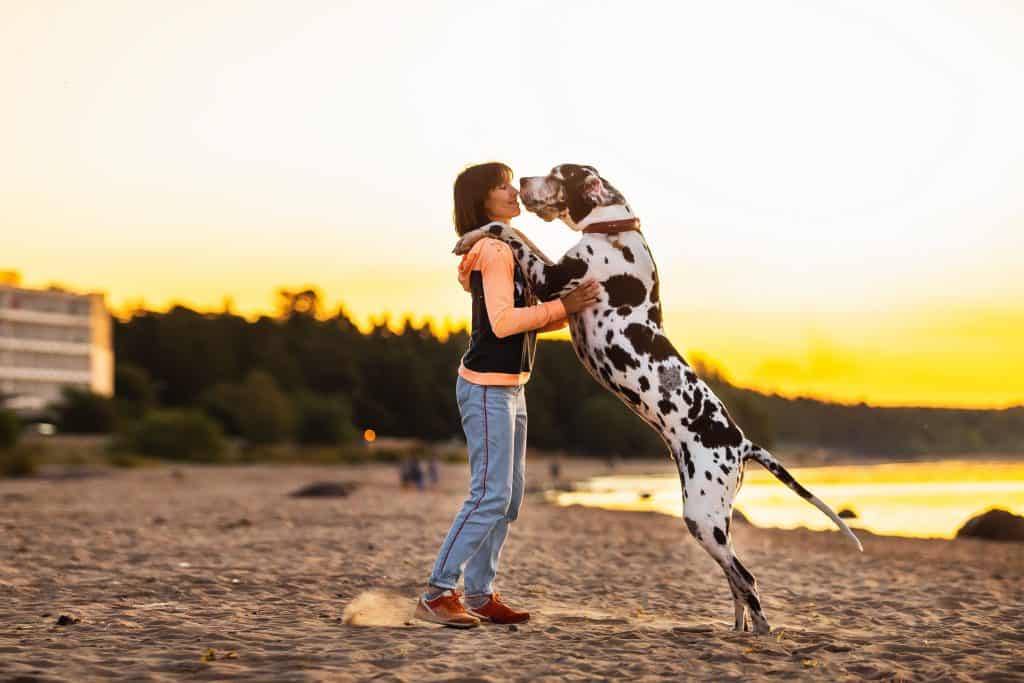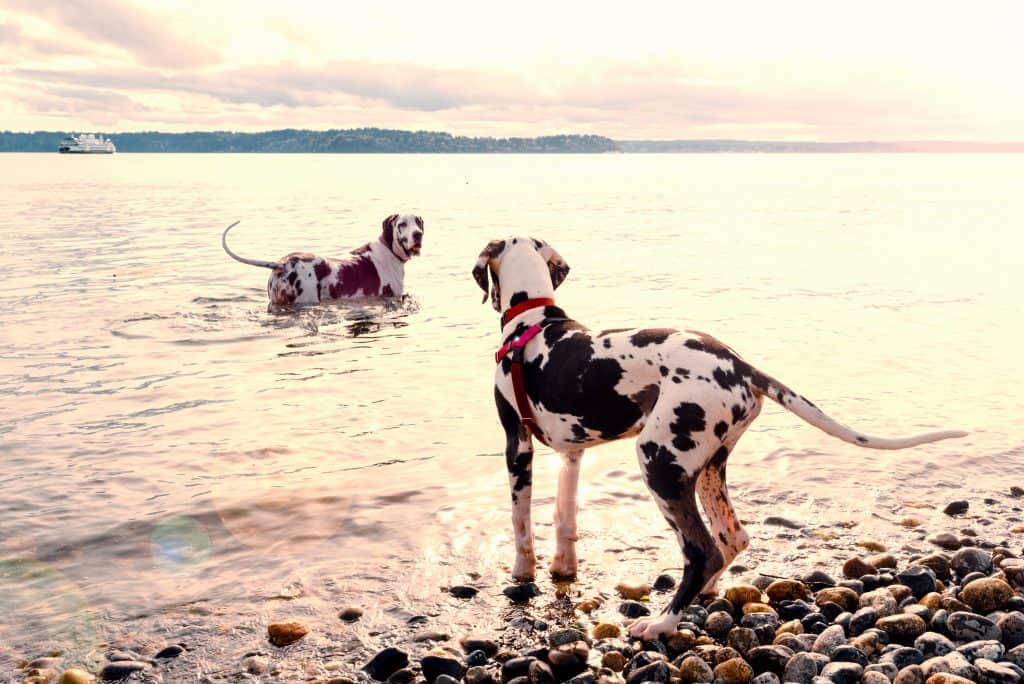Introducción
Great Danes are known for their massive size, but their temperament and behavior are what truly set them apart. Often referred to as “gentle giants,” they are affectionate, friendly, and incredibly devoted to their families. While their imposing stature may intimidate some, Great Danes are typically mild-mannered, making them excellent companions for those who understand their unique needs.
Owning a Gran Danés requires more than just appreciating their looks. Their temperament makes them wonderful pets, but their size, energy levels, and potential behavioral quirks mean they need a committed and knowledgeable owner. Whether you are considering adding one to your home or already have a Dane, understanding their personality can help you build a strong, lasting bond.
In this article, we’ll explore the temperament and behavior of Great Danes, including their social nature, intelligence, potential challenges, and training needs. By the end, you’ll have a clearer picture of what to expect from this breed and how to ensure they thrive in your care.
Some of our latest products...
-
Patrones
Bark-BQ Taste Tester Dog Bandana
€ 7.38 - € 9.84Rango de precios: desde € 7.38 hasta € 9.84 EUR Seleccionar opciones Este producto tiene múltiples variantes. Las opciones se pueden elegir en la página de producto -
Patrones
Dog Dad Life Dog Bandana
€ 7.38 - € 9.84Rango de precios: desde € 7.38 hasta € 9.84 EUR Seleccionar opciones Este producto tiene múltiples variantes. Las opciones se pueden elegir en la página de producto -
Patrones
Puppyccino Delight Dog Bandana
€ 7.38 - € 9.84Rango de precios: desde € 7.38 hasta € 9.84 EUR Seleccionar opciones Este producto tiene múltiples variantes. Las opciones se pueden elegir en la página de producto -
Espíritu de equipo
Winnipeg Blue Bombers Dog Bandana
€ 11.07 - € 13.53Rango de precios: desde € 11.07 hasta € 13.53 EUR Seleccionar opciones Este producto tiene múltiples variantes. Las opciones se pueden elegir en la página de producto
Temperamento general
Great Danes have earned the nickname “gentle giants” for a reason. Despite their enormous size, they are incredibly affectionate, loving, and patient. They thrive on human companionship and often form deep bonds with their families. This breed tends to be very loyal and enjoys being involved in daily activities, whether it’s lounging on the couch, following you from room to room, or going for a walk.
One of the most endearing traits of a Great Dane is their friendly and sociable nature. They generally get along well with children and other pets, making them an excellent choice for families. However, due to their size, it’s important to supervise interactions with young children to ensure play remains safe. Their playful and gentle demeanor often makes them seem unaware of just how big they are, leading to some amusing—yet sometimes clumsy—moments.
Great Danes are also known for being protective without being overly aggressive. They are naturally watchful and will alert their owners if they sense something unusual, but they are not typically prone to unnecessary barking or hostility. With proper training and socialization, they develop into well-mannered and affectionate companions.
While they love being around people, Great Danes do not do well when left alone for long periods. They are prone to developing separation anxiety, which can lead to destructive behaviors if their emotional needs are not met. For those who spend a lot of time away from home, this breed may require extra effort, such as hiring a pet sitter or providing interactive toys to keep them engaged.
Common Behavioral Traits
Great Danes have a unique combination of traits that make them both fascinating and sometimes challenging to own. While they are known for being gentle and affectionate, their behavior can vary based on training, socialization, and individual personality.
One of the most notable characteristics of a Great Dane is their playful and sometimes goofy nature. Despite their large size, they often act like oversized puppies, enjoying zoomies around the house or attempting to fit into spaces much too small for them. This playful side makes them fun companions, but it also means they need some structure to prevent them from knocking things over unintentionally.
Their intelligence is another standout trait. Great Danes are quick learners and generally eager to please, but they can also be a little stubborn at times. This mix of intelligence and independence means training should be consistent, positive, and reward-based. Harsh training methods won’t work well with them, as they are sensitive dogs who respond best to encouragement and patience.
Socially, Great Danes are highly affectionate and form strong bonds with their humans. They crave attention and will often lean against you or try to sit in your lap—despite their size—just to be close. This breed does not do well when ignored or left alone for too long. They thrive in environments where they can be part of the family’s daily routine.
However, their affectionate nature can sometimes translate into clinginess. Many Great Danes develop a strong attachment to their owners, which can lead to separation anxiety if they are not gradually trained to be comfortable alone. Providing them with plenty of mental stimulation, such as puzzle toys or interactive games, can help reduce anxiety when you’re away.
Overall, Great Danes are loving, playful, and intelligent dogs with a strong desire to be close to their families. While they can have a stubborn streak and require a bit of patience in training, their affectionate and devoted nature makes them rewarding companions.
Posibles desafíos de comportamiento
While Great Danes are known for their affectionate and friendly nature, their size and temperament can present certain behavioral challenges. Understanding these potential issues can help owners proactively address them and create a well-balanced and happy dog.
One of the most common challenges with Great Danes is separation anxiety. Because they bond so closely with their owners, they often struggle when left alone for long periods. This can lead to destructive behaviors such as chewing furniture, excessive barking, or even attempting to escape. To prevent separation anxiety, it’s important to gradually train them to be comfortable being alone and provide stimulating activities, such as puzzle toys, while you’re away.
Another behavior that can be problematic is jumping and leaning. Great Danes have a habit of leaning on their owners, which can be endearing but also overwhelming due to their weight. Jumping up on people is another behavior that needs to be managed early, as their large size can unintentionally knock over children or visitors. Teaching commands like “off” and reinforcing calm greetings will help keep this behavior under control.
Many Great Danes are also known for drooling and slobbering—a natural but sometimes messy part of owning this breed. While not necessarily a behavioral issue, it’s something owners should be prepared for. Keeping towels handy and regularly wiping their mouths can help manage the mess.
Some Great Danes exhibit guarding instincts, particularly if they haven’t been properly socialized. While they are not naturally aggressive, they can be protective of their families. Socialization from an early age helps prevent any territorial behavior from developing. Introducing them to different people, places, and situations can help them become more confident and less wary of new experiences.
Addressing these challenges requires patience, consistency, and proper training. With the right approach, most behavioral issues can be managed, ensuring your Great Dane becomes a well-mannered and loving member of the family.
Tips for Training and Socialization
Training and socialization are essential for Great Danes, not only because of their intelligence but also due to their massive size. A small behavioral issue in a toy breed can be manageable, but the same behavior in a 150-pound dog can become a serious problem. Establishing good habits early on will make life much easier for both the dog and the owner.
Start Early and Stay Consistent
Great Danes grow rapidly, and training should begin as early as possible. Teaching basic commands like sit, stay, and come while they are still puppies helps prevent bad habits from developing. Consistency is key—giving mixed signals will confuse your dog and slow progress. Short, positive training sessions work best, as Great Danes can lose focus if training becomes too repetitive or boring.
Utilice refuerzo positivo
These dogs respond well to praise, treats, and encouragement. Harsh training methods or punishment can make them fearful and stubborn, leading to anxiety-based behavioral issues. Rewarding desired behaviors and redirecting unwanted ones will create a strong foundation for good manners.
Socialization is Crucial
Exposing a Great Dane to various people, environments, and other animals from an early age helps them develop confidence and prevents shyness or fear-based reactions. Regular visits to parks, meeting new dogs, and experiencing different surroundings will make them more adaptable and well-behaved in different situations.
Preventing Jumping and Leaning
Since Great Danes often lean on people or attempt to jump up in excitement, it’s important to discourage these behaviors early. Teaching them to greet people calmly and reinforcing commands like “off” can prevent issues as they grow. Ignoring jumping and rewarding only when all four paws are on the ground will reinforce good manners.
Mental Stimulation Matters
Great Danes may not be as high-energy as some other breeds, but they do need mental engagement. Without stimulation, they may develop undesirable behaviors like chewing or excessive barking. Interactive toys, food puzzles, and short training exercises will help keep their minds active and engaged.
With patience and commitment, training a Great Dane can be a rewarding experience. A well-trained Great Dane is not only easier to manage but also a joy to have as a companion.
Necesidades de ejercicio y estimulación mental
Despite their imposing size, Great Danes are not the most high-energy breed. However, they still require daily exercise to maintain their health and prevent boredom-related behaviors. A well-exercised Great Dane is a happy and well-behaved companion, but their exercise routine needs to be tailored to their unique physical structure.
Daily Walks and Playtime
Great Danes benefit from at least 30 to 60 minutes of daily exercise. This can include a couple of moderate-paced walks and some playtime in a fenced yard. Unlike working breeds that require extensive exercise, Great Danes are content with moderate activity as long as they get enough time to stretch their legs. They also enjoy playing with their owners, whether it’s a gentle game of fetch or interactive toys that engage their minds.
Avoiding Excessive Strain on Joints
Because Great Danes are a giant breed, they are prone to joint and bone issues, especially as puppies. Over-exercising them at a young age can lead to long-term orthopedic problems. Activities like running on hard surfaces or jumping from high places should be avoided until they are fully grown (around 18–24 months). Even as adults, they should not be encouraged to participate in high-impact activities like agility or long-distance running, as their joints are not built for intense repetitive strain.
Mental Stimulation is Just as Important
Great Danes are intelligent dogs that thrive on interaction and engagement. Boredom can lead to destructive behaviors, so mental stimulation is just as important as physical exercise. Puzzle toys, obedience training, and interactive play sessions help keep their minds active. Since they enjoy being close to their owners, games that involve problem-solving or training exercises are particularly rewarding for them.
Balancing Rest and Activity
It’s important to remember that Great Danes also need plenty of rest. They love lounging around and will happily spend hours napping. Striking a balance between exercise, playtime, and rest ensures they remain healthy and content. Owners should watch for signs of overexertion, especially in hot weather, as Great Danes can be prone to overheating.
Providing both physical and mental enrichment will help prevent boredom and behavioral issues. A well-exercised and mentally engaged Great Dane is more likely to be calm, well-behaved, and happy in their home environment.
Preguntas frecuentes (FAQ)
1. Are Great Danes good for first-time dog owners?
Yes, but they require commitment to training and socialization due to their size and needs. While their gentle nature makes them easygoing, their large size can make handling them challenging if they are not properly trained from an early age. First-time owners should be prepared for consistent training, regular exercise, and a breed that thrives on companionship.
2. Do Great Danes bark a lot?
No, they are not known to be excessive barkers. Great Danes are generally quiet dogs, but they will bark if they sense something unusual or if they feel the need to alert their owners. Proper socialization can help prevent unnecessary barking, and they typically settle down once they feel comfortable in their environment.
3. How do Great Danes handle being alone?
Great Danes do not tolerate long periods of solitude well. They are highly social dogs that form strong bonds with their owners, and prolonged separation can lead to anxiety and destructive behaviors. If left alone frequently, they may benefit from a pet sitter, dog walker, or interactive toys to keep them occupied.
4. Are Great Danes aggressive?
No, Great Danes are not naturally aggressive. They are affectionate, friendly, and gentle, but they do have protective instincts. Proper socialization from an early age ensures they remain well-mannered and approachable while still being alert to their surroundings.
5. How much space does a Great Dane need?
While they can adapt to various living spaces, including apartments, they need enough room to move comfortably. Their large size means they require a spacious sleeping area and a safe environment where they won’t accidentally knock over furniture. Access to an outdoor space, like a fenced yard, is beneficial but not a strict requirement as long as they get regular exercise.







